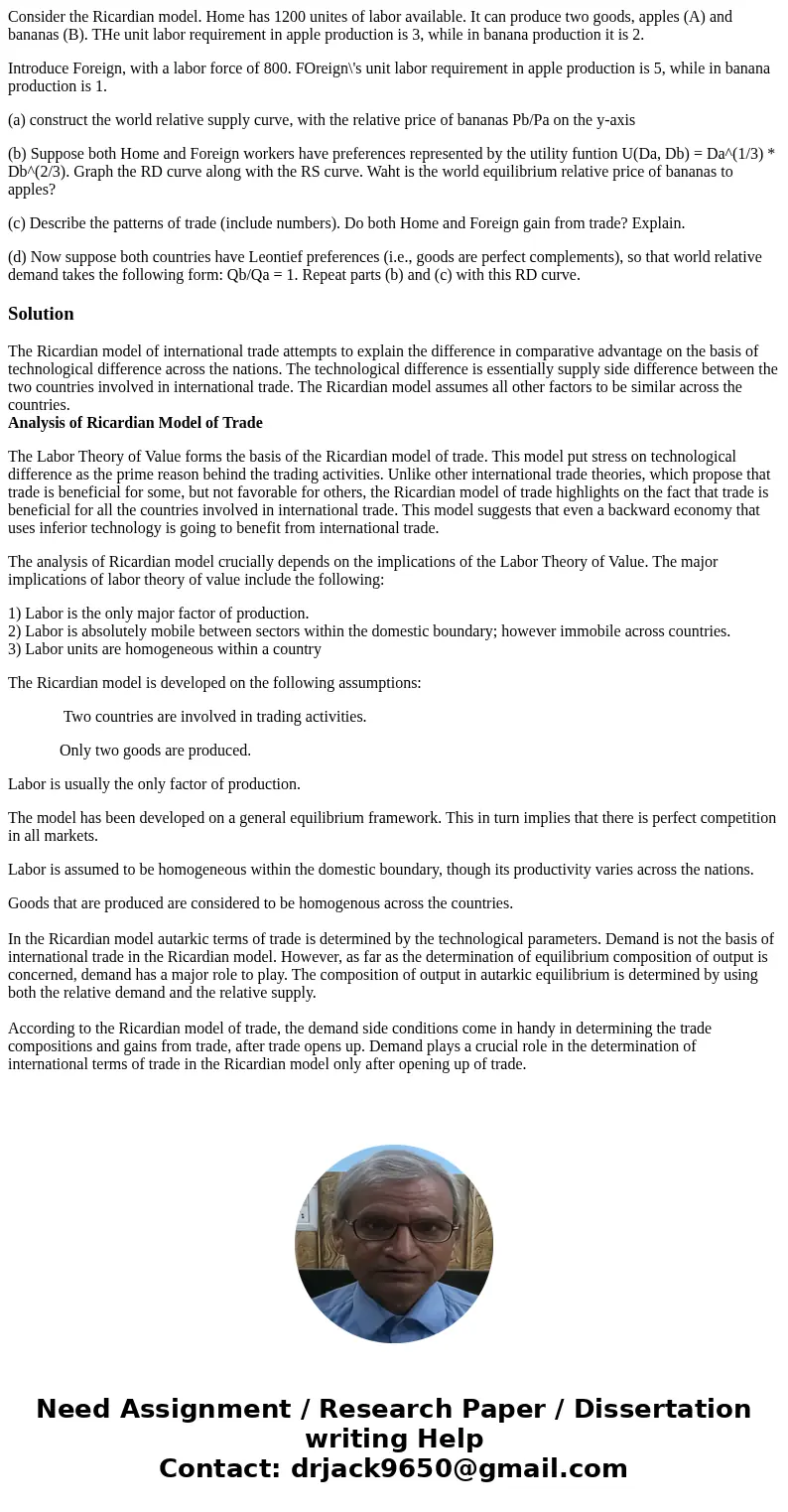Consider the Ricardian model Home has 1200 unites of labor a
Consider the Ricardian model. Home has 1200 unites of labor available. It can produce two goods, apples (A) and bananas (B). THe unit labor requirement in apple production is 3, while in banana production it is 2.
Introduce Foreign, with a labor force of 800. FOreign\'s unit labor requirement in apple production is 5, while in banana production is 1.
(a) construct the world relative supply curve, with the relative price of bananas Pb/Pa on the y-axis
(b) Suppose both Home and Foreign workers have preferences represented by the utility funtion U(Da, Db) = Da^(1/3) * Db^(2/3). Graph the RD curve along with the RS curve. Waht is the world equilibrium relative price of bananas to apples?
(c) Describe the patterns of trade (include numbers). Do both Home and Foreign gain from trade? Explain.
(d) Now suppose both countries have Leontief preferences (i.e., goods are perfect complements), so that world relative demand takes the following form: Qb/Qa = 1. Repeat parts (b) and (c) with this RD curve.
Solution
The Ricardian model of international trade attempts to explain the difference in comparative advantage on the basis of technological difference across the nations. The technological difference is essentially supply side difference between the two countries involved in international trade. The Ricardian model assumes all other factors to be similar across the countries.
Analysis of Ricardian Model of Trade
The Labor Theory of Value forms the basis of the Ricardian model of trade. This model put stress on technological difference as the prime reason behind the trading activities. Unlike other international trade theories, which propose that trade is beneficial for some, but not favorable for others, the Ricardian model of trade highlights on the fact that trade is beneficial for all the countries involved in international trade. This model suggests that even a backward economy that uses inferior technology is going to benefit from international trade.
The analysis of Ricardian model crucially depends on the implications of the Labor Theory of Value. The major implications of labor theory of value include the following:
1) Labor is the only major factor of production.
2) Labor is absolutely mobile between sectors within the domestic boundary; however immobile across countries.
3) Labor units are homogeneous within a country
The Ricardian model is developed on the following assumptions:
Two countries are involved in trading activities.
Only two goods are produced.
Labor is usually the only factor of production.
The model has been developed on a general equilibrium framework. This in turn implies that there is perfect competition in all markets.
Labor is assumed to be homogeneous within the domestic boundary, though its productivity varies across the nations.
Goods that are produced are considered to be homogenous across the countries.
In the Ricardian model autarkic terms of trade is determined by the technological parameters. Demand is not the basis of international trade in the Ricardian model. However, as far as the determination of equilibrium composition of output is concerned, demand has a major role to play. The composition of output in autarkic equilibrium is determined by using both the relative demand and the relative supply.
According to the Ricardian model of trade, the demand side conditions come in handy in determining the trade compositions and gains from trade, after trade opens up. Demand plays a crucial role in the determination of international terms of trade in the Ricardian model only after opening up of trade.

 Homework Sourse
Homework Sourse